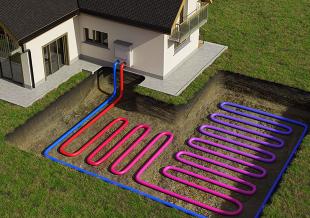Decarbonising Off-Grid Homes: Lessons From the North of England
 vchal / Shutterstock
vchal / Shutterstock
How do we achieve net zero in communities that aren’t connected to the grid?
Around 2,000 homes in the U.K. are completely off-grid and millions more lack access to mains gas. These households often face higher fuel costs, greater energy insecurity and limited access to national decarbonisation programmes. Yet their inclusion is essential if the U.K. is to meet its climate targets equitably.
From 2023 to 2025, Thornton Tomasetti collaborated with the Centre for Regional Economic Social Research, Northern Powergrid and Northern Gas Networks on a research initiative exploring practical pathways to decarbonise off-grid housing. My colleague Senior Engineer Ella Schaefer and I worked with this team to model and assess the effects of a variety of decarbonization options for several representative homes.
Understanding the Realities of Off-Grid Living
Our research focused on rural communities in the North of England, where energy supply is fragmented and housing stock is typically older and harder to retrofit. By engaging directly with residents, we developed six case studies illustrating the social, economic and technical realities of off-grid households.
The team assessed each case using a decarbonisation framework that integrated stakeholder feedback, energy modelling and building performance analysis to identify viable pathways to reduce emissions.
What We Found
Decarbonising off-grid homes is not a one-size-fits-all challenge. Common retrofit strategies – such as heat pumps or deep fabric upgrades – can be too expensive, disruptive or technically unsuitable for many rural homes. Residents were more receptive to incremental, low-impact improvements, including better insulation, efficient appliances and hybrid systems that complement existing infrastructure.
Many preferred to retain backup systems – such as wood burners or diesel generators – which provide comfort and energy security during extreme weather or fuel supply interruptions.
Bridging the Gap Between Policy and Practice
The findings highlight a critical gap between policy assumptions and on-the-ground realities. Achieving equitable decarbonisation will require:
- Tailored, community-sensitive frameworks that reflect the diversity of off-grid homes.
- Improved resident engagement, ensuring solutions are co-designed and practical.
- Financial support mechanisms that enable phased, affordable upgrades.
- Integration of hybrid and transitional systems that balance sustainability with resilience.
These insights underscore the need for flexible, data-driven strategies that recognise how people actually live and use energy.
Our Role in Energy Transition Planning
This research builds on Thornton Tomasetti’s broader work in energy and decarbonisation – applying systems-level analysis, modelling and performance validation to advance resilient, low-carbon solutions for buildings and infrastructure.
From energy master planning and microgrid design to building-scale retrofit strategies, our engineers and analysts help clients plan and deliver the transition to net zero – whether on or off the grid.
Authored By

Tim Ashworth, Principal
Tim Ashworth has more than two decades of experience in the analysis, assessment, decommissioning and demolition of nuclear structures, and in producing safety documentation and arguments required to support domestic and international clients through the process. His primary area of expertise is risk reduction for high-hazard facilities in the energy, heavy civil engineering, nuclear, power and defence industries.

Ella Schaefer, Senior Engineer
Ella Schaefer has extensive experience in the nuclear industry and now works on projects related to the firm's decarbonisation agenda – including lithium ion-battery (LIB) safety and risk, and sustainability and energy infrastructure development – and has been part of a number of oil and gas projects including modelling hydrocarbon releases, fire and gas detector layout studies and consequence assessments.



